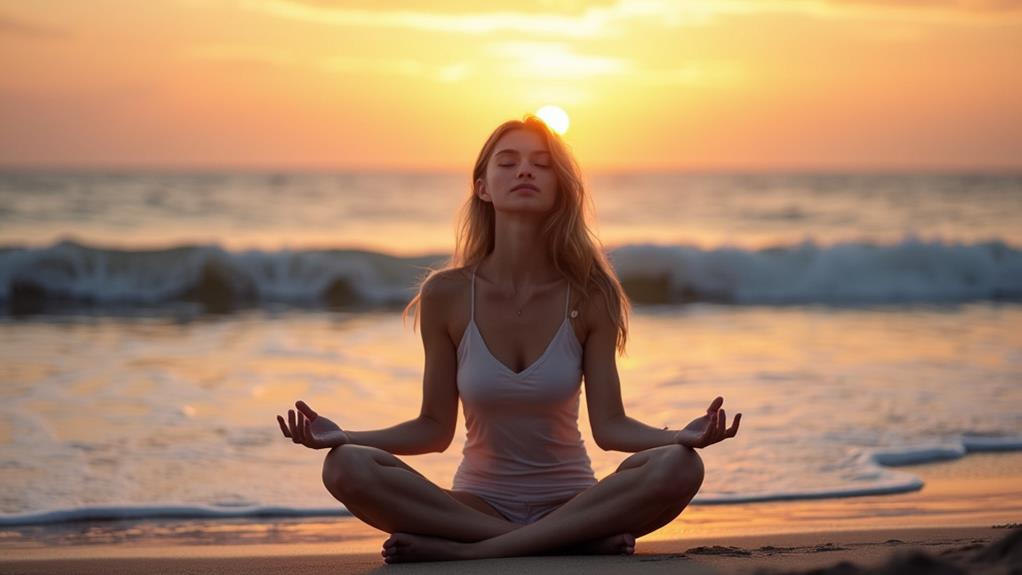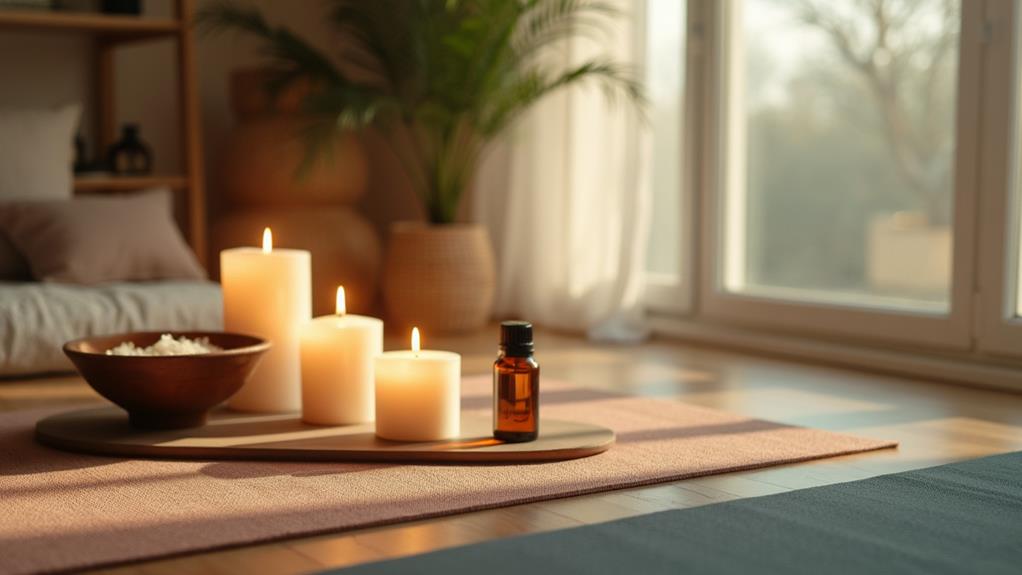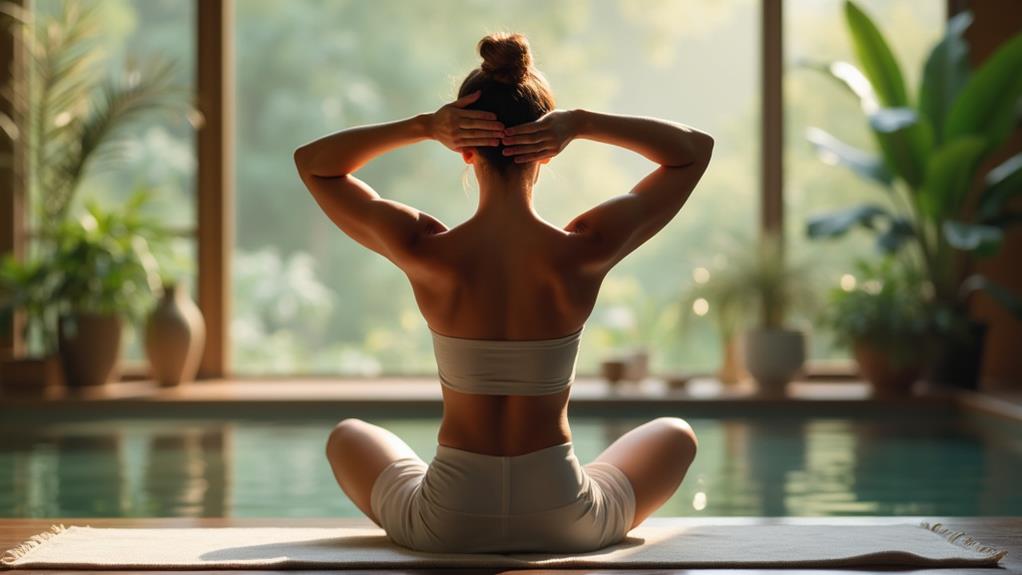You might be surprised to learn how effective Progressive Muscle Relaxation (PMR) can be for managing stress. By focusing on tensing and then relaxing specific muscle groups, you can create a profound sense of calm that not only eases physical tension but also enhances mental clarity. As you prepare to incorporate this technique into your routine, understanding the correct steps and muscle groups to target is essential. So, what are the key elements you need to know to make PMR work for you? Let’s explore that together.
What Is Progressive Muscle Relaxation?

Understanding progressive muscle relaxation (PMR) can be a game-changer in managing stress. Developed by Dr. Edmund Jacobson in the early 20th century, PMR has a rich history rooted in the understanding of the mind-body connection. Jacobson’s research highlighted how muscle tension correlates with stress, leading him to create a method that involves systematically tensing and relaxing muscle groups throughout the body.
This history overview reveals PMR’s evolution into a widely accepted technique for promoting relaxation and reducing anxiety.
The scientific basis behind PMR lies in its ability to activate the body’s relaxation response. By focusing on physical sensations and breath, you can interrupt the stress response that often feels overwhelming.
As you engage in this practice, your body learns to differentiate between tension and relaxation, resulting in a profound sense of calm. Numerous studies support PMR’s effectiveness in reducing stress and improving emotional well-being, making it a valuable tool in your wellness toolkit.
Whether you’re new to relaxation techniques or seeking to enhance your current practices, PMR offers a structured approach to finding tranquility amidst life’s challenges.
Benefits of Progressive Muscle Relaxation
Experiencing the benefits of progressive muscle relaxation (PMR) can greatly enhance your overall well-being. One of the most significant physical benefits of PMR is its ability to reduce muscle tension throughout your body. By systematically tensing and relaxing different muscle groups, you allow your body to release built-up stress, leading to a sensation of relaxation that can alleviate chronic pain and improve your overall comfort.
Additionally, PMR promotes mental clarity. As you focus on each muscle group, you shift your attention away from daily stressors and distractions. This mindfulness aspect not only helps you achieve a state of calm but also enhances your ability to think clearly and make better decisions. Many individuals report feeling more focused and alert after practicing PMR, allowing them to tackle tasks with renewed energy and perspective.
Incorporating PMR into your routine can lead to improved sleep quality as well. By calming your mind and body, you create a conducive environment for restful sleep, which is essential for both physical and mental health.
Preparing for Your Practice

To get the most out of your progressive muscle relaxation (PMR) practice, it’s essential to create a calm and inviting environment.
Start by choosing a quiet space where you won’t be disturbed. This could be a cozy corner of your home, a peaceful garden, or even a comfortable chair in your office. Make sure the lighting is soft and soothing—consider using candles or dim lamp light.
Next, think about setting intentions for your practice. Decide what you’d like to achieve, whether it’s releasing tension, reducing anxiety, or simply finding a moment of peace.
Write these intentions down or say them aloud to reinforce your commitment.
You might also want to enhance your environment with calming elements, like soft music or essential oils. A pleasant scent can help signal your brain that it’s time to relax.
Step-by-Step PMR Technique
Now that you’ve created a peaceful setting for your practice, it’s time to learn the step-by-step technique of progressive muscle relaxation (PMR).
Begin by finding a comfortable position, either sitting or lying down. Take a few deep breaths to center yourself, focusing on your inhalation and exhalation.
Start with your toes. Tense the muscles for about five seconds, then release. Notice the difference between tension and relaxation; this is your muscle awareness.
Move up to your calves, repeating the tensing and releasing process. Continue this pattern through your thighs, abdomen, and back.
As you progress, pay attention to any areas that hold stress. Focus on those muscle groups, allowing for deeper tension release.
Work your way to your hands, arms, shoulders, neck, and face, ensuring you relax completely each time.
Throughout the practice, maintain your awareness of how your body feels. After you’ve tensed and relaxed all muscle groups, take a moment to notice the overall sensation of calmness throughout your body.
Common Muscle Groups to Focus On

When practicing progressive muscle relaxation, it’s essential to focus on specific muscle groups that commonly hold tension. One area to start is your neck, where tension often builds due to stress and poor posture. You can gently tighten the muscles in your neck for a few seconds and then release, feeling the relaxation flow through.
Another key area is the lower back, which frequently experiences tightness from sitting or standing for long periods. By consciously tensing and then relaxing the lower back muscles, you can alleviate discomfort and promote a sense of release.
Don’t overlook your shoulders, as they tend to carry the weight of your worries. Tensing and relaxing your shoulder muscles can also help ease neck tension.
Additionally, your facial muscles are worth focusing on; many people clench their jaws or furrow their brows without realizing it.
Tips for Effective Practice
Harnessing the power of a calm environment can greatly enhance your practice of progressive muscle relaxation. Choose a quiet, comfortable space where you won’t be disturbed. This sets the stage for effective relaxation.
As you begin, focus on your breathing techniques. Inhale deeply through your nose, allowing your abdomen to rise, then exhale slowly through your mouth. This rhythmic breathing helps center your mind and prepares your body for relaxation.
Incorporate visualization methods to deepen your experience. Picture a serene landscape or a peaceful moment from your life as you progress through muscle groups. This mental imagery can distract from stress and enhance your sense of calm.
Consistency is key. Set aside time each day to practice PMR, even if it’s just for a few minutes. This regularity helps train your mind and body to respond to relaxation cues more effectively.
Don’t rush; take your time with each muscle group, focusing on the sensations of tension and release.
Lastly, be gentle with yourself. It’s normal to have wandering thoughts. Acknowledge them, then guide your focus back to your breath and the relaxation process.
With practice, you’ll find PMR becomes a powerful tool in your stress-relief toolkit.
Incorporating PMR Into Daily Life
Incorporating progressive muscle relaxation (PMR) into your daily routine can be a game-changer for managing stress.
It’s all about creating mindful moments that help you reconnect with your body and mind. Here are some simple ways to weave PMR into your life:
- Set daily reminders: Use your phone or sticky notes to remind yourself to practice PMR at specific times, like during lunch breaks or before bed.
- Pair it with existing habits: Integrate PMR with activities you already do, like deep breathing while waiting for your coffee to brew.
- Create a calming environment: Designate a quiet space where you can practice PMR, making it a comfortable retreat from daily stressors.
Additional Relaxation Techniques
Exploring additional relaxation techniques can enhance your overall stress management toolkit. One effective method is breathing exercises, which can help you regain control over your breath and calm your mind. By focusing on slow, deep breaths, you can activate your body’s relaxation response.
Try inhaling deeply through your nose for a count of four, holding for four, and exhaling through your mouth for another count of four. This simple practice can be done anywhere and anytime you feel stress building up.
Another valuable technique is guided imagery. This practice involves visualizing a peaceful scene or scenario that brings you comfort and tranquility. You might picture a serene beach, a quiet forest, or any place where you feel safe and relaxed.
As you engage your senses, try to imagine the sounds, smells, and textures of that environment. Guided imagery can transport you away from stressors and promote a sense of calm.
Incorporating these additional relaxation techniques alongside progressive muscle relaxation can provide you with a thorough approach to managing stress. By nurturing your mind and body, you’ll cultivate a more balanced and peaceful life.
Conclusion
Incorporating Progressive Muscle Relaxation into your routine can be a powerful tool for managing stress. Not only does it help release physical tension, but it also fosters a deeper connection between your mind and body. Research suggests that regular practice can lead to lasting improvements in mental health and well-being. By committing to this technique, you’re not just finding relief; you’re nurturing a healthier, more balanced life. Embrace the journey, and give yourself the gift of relaxation.
















